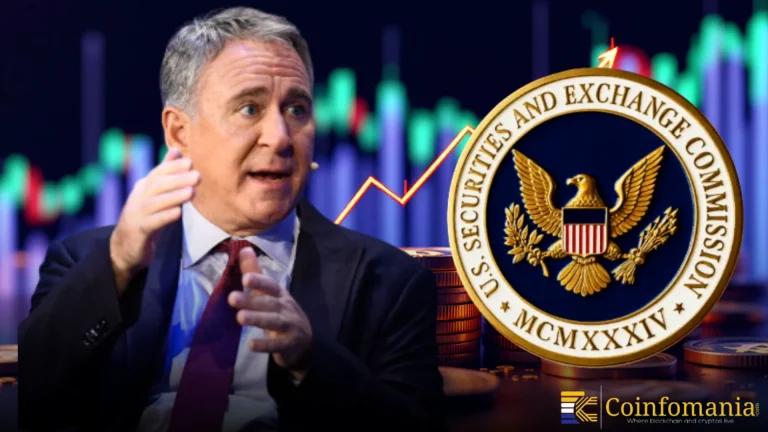Crypto Venture Capital Faces Life-or-Death Test in 2025
Crypto VCs struggle despite Bitcoin’s bull run. Funds face reduced capital, tighter rules, and must evolve into research-led investment.

Quick Take
Summary is AI generated, newsroom reviewed.
Crypto VCs struggle despite Bitcoin’s $100,000 surge.
Fundraising and deal flow remain weak.
Regulatory costs and risk aversion hinder LP participation.
Many VCs pivot to AI and secondary markets.
Firms evolve into research-driven investment banks.
In 2025, crypto VC is in a great paradox. Bitcoin has crossed the $100,000 mark. The market is again bullish. However, venture capital funds have problems raising funds. Limited partners are not willing to invest extra funds. A lot of funds have suspended fundraising rounds. Deal flow has decelerated through start-ups at the early stage. VCs lack the normal vigor of bull runs. There are even instances when some funds have retrenched their staff or turned towards secondary trading.
《深潮:币圈 VC 正迎来生死关口?》(作者:Ada)2025 年牛市归来,比特币破 10 万美元,但加密 VC 却陷入寒冬。ABCDE 停止募资,一级市场出手骤减,VC 从“风口追逐者”变成“生态末端”:不赚钱、募不到资,还被做市商和 KOL 抢走筹码,缺乏议价能力。一些转向 AI…
— 吴说区块链 (@wublockchain12) October 19, 2025
This disengagement is appalling to the industry. VC funding was always revived in the past bull markets. Increased prices do not now generate an investment euphoria. Investors are gravitating towards cheaper and regulated exchanges such as ETFs. This has placed crypto VCs in a new identity crisis.
Facts and Statistics
The amounts of funding decreased drastically in 2024. PitchBook reports indicate drastic negative changes in new deals. CryptoRank also validates that ROI of most funds has stagnated. According to Cointelegraph data of January 2025, only $11.5 billion of funding rounds were held last year. It is practically half the highs of 2021 and 2022 of $30 billion.
The deceleration is interstitial. Early-stage deals fell most. Deals at later stages almost disappeared. VCs such as ABCDE ceased to raise funds. The abacus between losers and winners increased. Big funds having institutional support survive. Smaller ones are not able to justify fees. The reasons are structural. There is increased regulation in international markets. A large number of LPs are afraid of compliance, and reputational risk. They are still plagued by past losses in the 2022 bear market. The token model is no longer looked upon as being genuine. Investors require physical income. Such hype and white papers are not enough any longer.
There is additional uncertainty when dealing with public markets. Bitcoin ETFs receive enormous inflows now draining liquidity out of startups. A lot of institutions favor passive exposure to venture bets. This causes the VCs to lose their traditional impact in the ecosystem.
How VCs Adapt and Pivot
As a way of surviving, a lot of VCs are reinventing themselves. Others are also functioning as boutique banks. They provide consultative and research services. They assist with the structuring of token offerings of projects. Others introduce systematic funds or revenue-sharing products. These strategies give it cash flow and minimize risk.
A number of companies are putting funds in AI startups. A new model is emerging. VCs are turning into crypto investment banks. They are a combination of research, deal-making, and compliance. They guide startups on fundraising, partnership and listings. This change requires experience and big picture.It needs licenses, compliance officers and effective research teams. The cost might be too expensive to smaller firms. However, early adapters may be in control of the following cycle.
Regulatory Pressure/Compliance
There has been an increase in regulatory regulation. The MiCA framework of the EU has become very strict. Failure to comply welcomes punishment and suspension. This change will transform crypto innovation. There will be loss of funding on some projects. Still those that have strong models will be prosperous. VCs are currently giving preference to startups that have actual revenue and KPIs. The quality of token launches will decrease, yet get better.
Certain VCs refunded the capital to LPs as an effort to keep the trust. Others developed structured credit products to investors who were of a conservative nature. These products have smaller yet less risky returns. Transparency and legal audits have become the norm. Cointelegraph indicates that there is a $100,000 milestone of Bitcoin and a low level of VC activity. CryptoRank offers fund tracking and ROI. KPMG is still alerting the regulatory burdens. All these reports confirm the current revolution. The Wu Blockchain post is representative of the sentiment across the world.
Crypto venture capital is at a crossroad. Money that is not adaptable will evaporate. The ones that adopt research compliance and diversification will survive. Shareholders need to concentrate on good projects. Startups are supposed to strive to attract actual users and consistent income. Regulators have to find equilibrium between regulation and innovation. The crypto VC winter is not probably over soon. But it may have a healthier and more sustainable market. The wave of success will be the one that will develop further than speculation.
References
Follow us on Google News
Get the latest crypto insights and updates.


